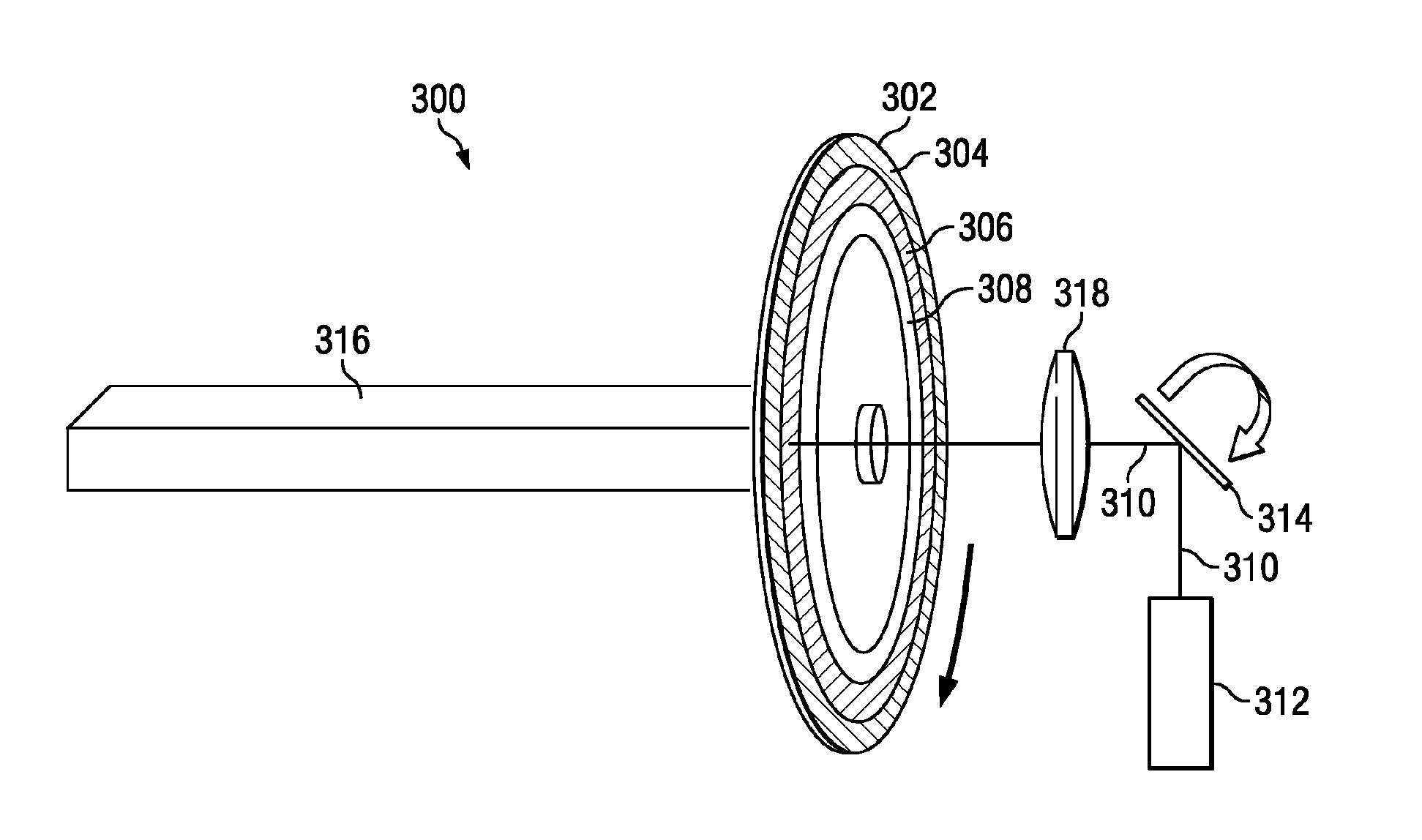Wavelength conversion
a wavelength conversion and optical technology, applied in the field of optical components, can solve the problems of low power density, limited luminance, and difficulty in cooling high-power leds in small packages, and achieve the effects of reducing the cost of optical components, and improving the efficiency of optical components
- Summary
- Abstract
- Description
- Claims
- Application Information
AI Technical Summary
Benefits of technology
Problems solved by technology
Method used
Image
Examples
Embodiment Construction
[0019]FIG. 1 is a plan view of a typical phosphor-based color wheel 100 of the prior art. The wheel, is comprised of multiple color segments 102, 104, 106, each of which is used to generate light having a particular color as will be explained later. The color segments 102, 104, 106 are attached to a central hub 108 which has a central aperture 110 through which a shaft is attached to the color wheel 100.
[0020]While three segments are shown in FIG. 1, the color wheel 100 of FIG. 1 may include more segments. For example, many color wheels include a single segment for each of three primary colors such as red, green, and blue. Other color wheels include multiple segments for a single color—either adjacent to segments of the same color or separated by segments of another color. Color wheels may also include additional colors such as cyan, magenta, and yellow, and may provide segments intended to generate white light—often called white or clear segments. While three primary colors have tr...
PUM
 Login to View More
Login to View More Abstract
Description
Claims
Application Information
 Login to View More
Login to View More - R&D
- Intellectual Property
- Life Sciences
- Materials
- Tech Scout
- Unparalleled Data Quality
- Higher Quality Content
- 60% Fewer Hallucinations
Browse by: Latest US Patents, China's latest patents, Technical Efficacy Thesaurus, Application Domain, Technology Topic, Popular Technical Reports.
© 2025 PatSnap. All rights reserved.Legal|Privacy policy|Modern Slavery Act Transparency Statement|Sitemap|About US| Contact US: help@patsnap.com



